
I accompanied him back to Rossville, and when we reached the skirt of the little hamlet General Thomas halted and we dismounted. Going into one of the angles of a worm fence near by I took a rail from the top
 and put it through the lower rails at a proper height from the ground to make a seat, and General Thomas and I sat down while, my troops were moving by.
and put it through the lower rails at a proper height from the ground to make a seat, and General Thomas and I sat down while, my troops were moving by.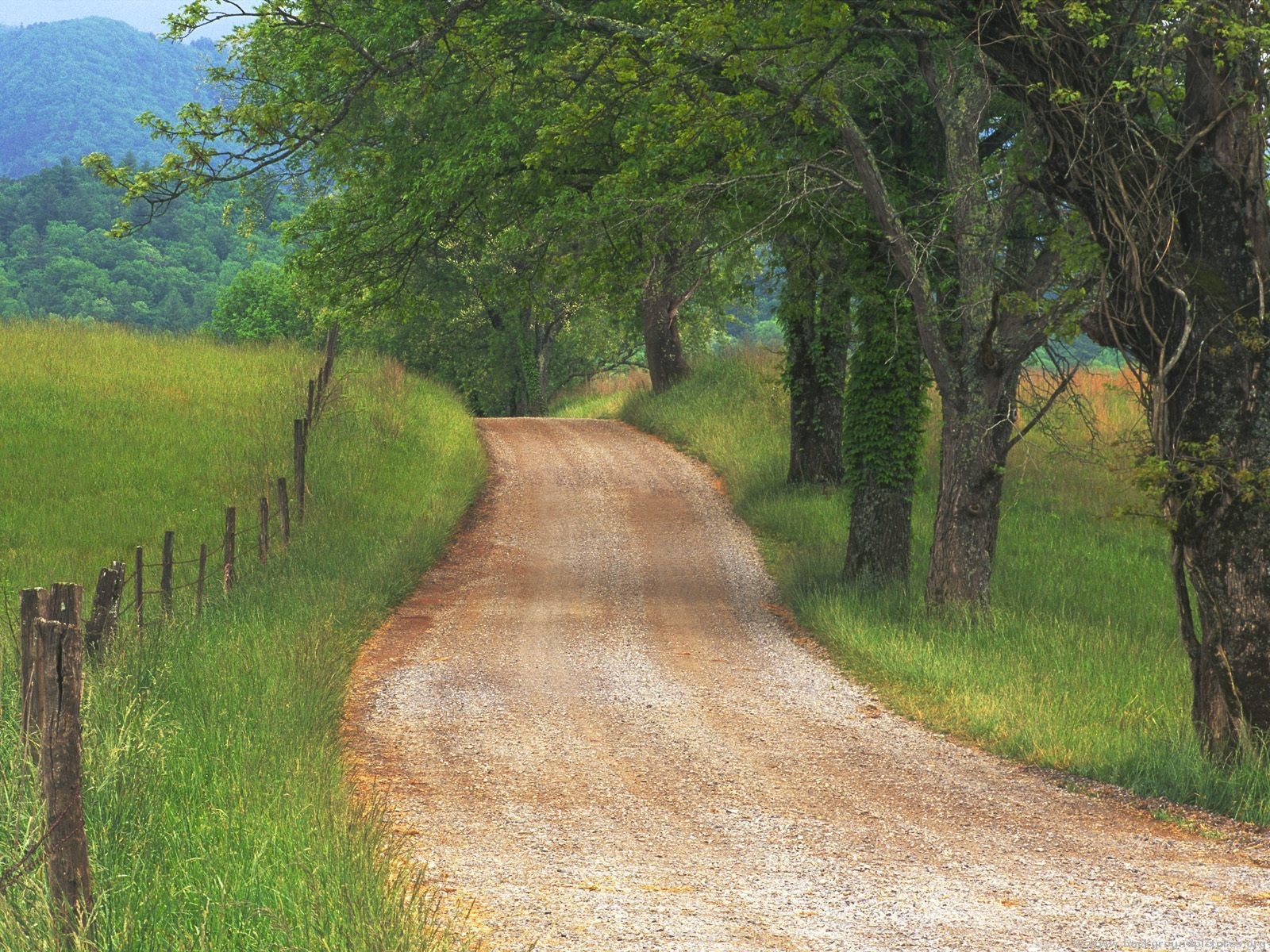 The General appeared very much exhausted, seemed to forget what he had stopped for, and said little or nothing of the incidents of the day. This was the second occasion on which I had met him in the midst of misfortune, for during the fight in the cedars at Stone River,
The General appeared very much exhausted, seemed to forget what he had stopped for, and said little or nothing of the incidents of the day. This was the second occasion on which I had met him in the midst of misfortune, for during the fight in the cedars at Stone River,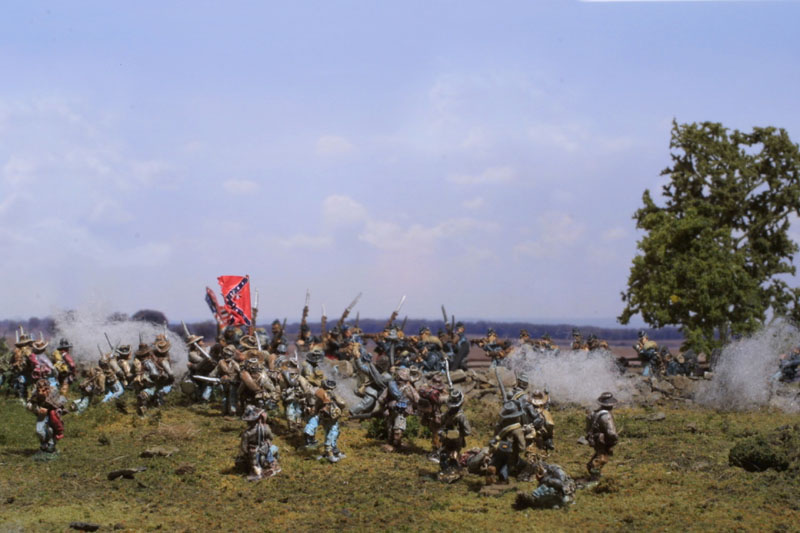 when our prospects were most disheartening, we held a brief conversation respecting the line he was then taking up for the purpose of helping me. At other times, in periods of inactivity, I saw but little of him. He impressed me, now as he did in the cedars, his quiet,
when our prospects were most disheartening, we held a brief conversation respecting the line he was then taking up for the purpose of helping me. At other times, in periods of inactivity, I saw but little of him. He impressed me, now as he did in the cedars, his quiet, unobtrusive: demeanor communicating a gloomy rather than a hopeful view of the situation. This apparent depression was due no doubt to the severe trial through which he had gone in the last forty-eight hours, which, strain had exhausted
unobtrusive: demeanor communicating a gloomy rather than a hopeful view of the situation. This apparent depression was due no doubt to the severe trial through which he had gone in the last forty-eight hours, which, strain had exhausted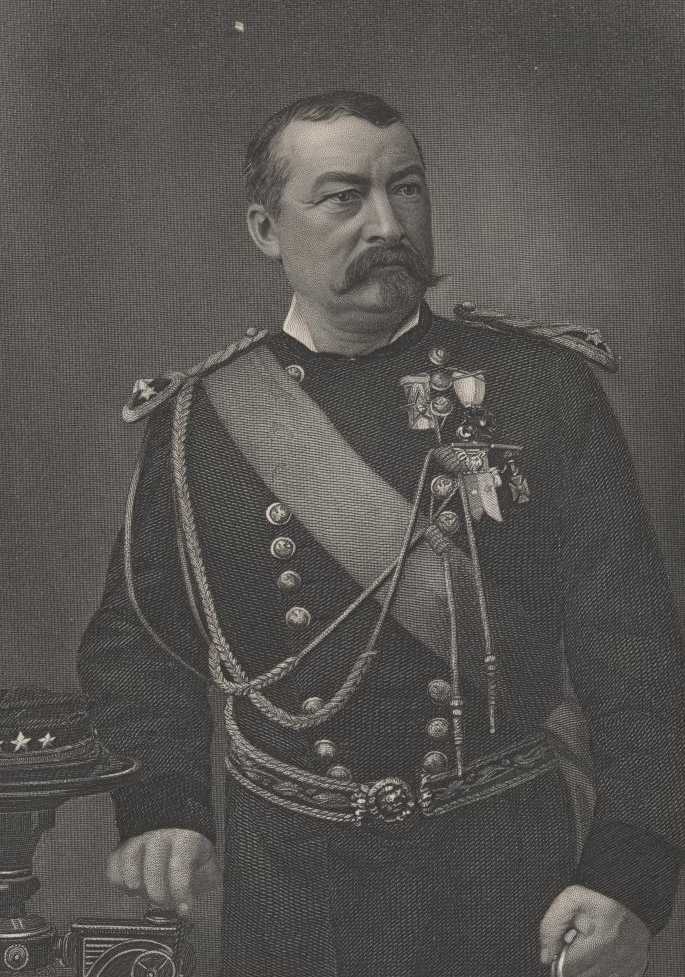 him very much both physically and mentally. His success in maintaining his ground was undoubtedly largely influenced by the fact that two-thirds of the National forces had been sent to his succor, but his firm purpose to save the army was the mainstay on which all relied after Rosecrans left the field.
him very much both physically and mentally. His success in maintaining his ground was undoubtedly largely influenced by the fact that two-thirds of the National forces had been sent to his succor, but his firm purpose to save the army was the mainstay on which all relied after Rosecrans left the field.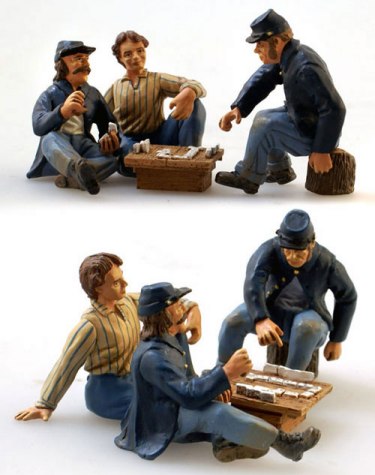 As the command was getting pretty well past, I rose to go in order to put my troops into camp. This aroused the General, when,
As the command was getting pretty well past, I rose to go in order to put my troops into camp. This aroused the General, when, remarking that he had a little flask of brandy in his saddle-holster, he added that he had just stopped for the purpose of offering me a drink, as he knew I must be very tired. He requested one of his staff-officers to get
remarking that he had a little flask of brandy in his saddle-holster, he added that he had just stopped for the purpose of offering me a drink, as he knew I must be very tired. He requested one of his staff-officers to get 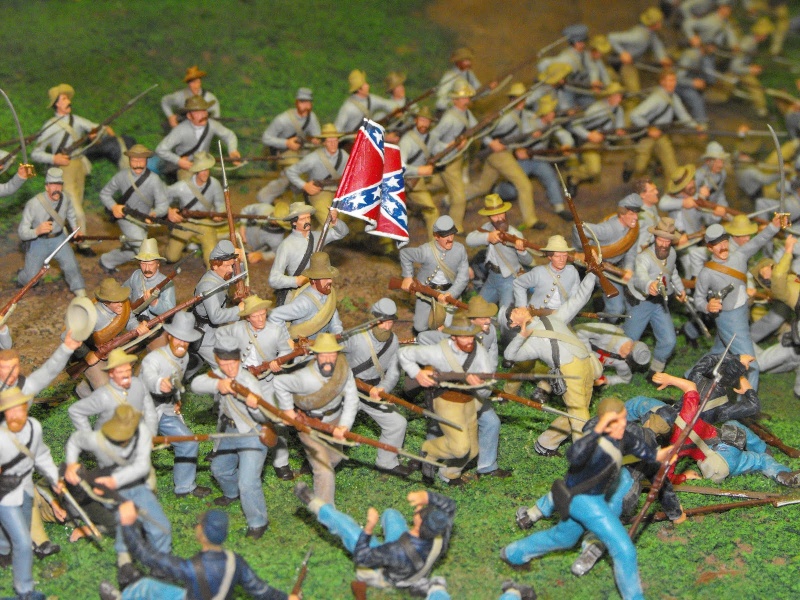 the flask, and after taking a sip himself, passed it to me. Refreshed by the brandy, I mounted and rode off to supervise the encamping of my division, by no means an easy task considering the darkness, and the confusion that existed among the troops that had preceded us into Rossville.
the flask, and after taking a sip himself, passed it to me. Refreshed by the brandy, I mounted and rode off to supervise the encamping of my division, by no means an easy task considering the darkness, and the confusion that existed among the troops that had preceded us into Rossville.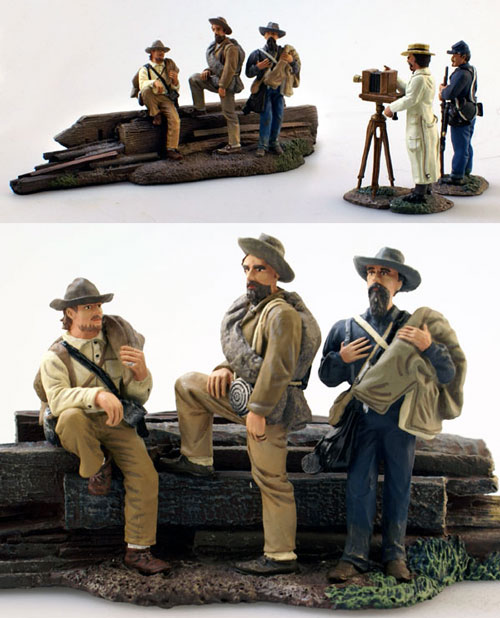
This done, I lay down at the foot of a tree, with my saddle for a pillow, and saddle-blanket for a cover. Some soldiers near me having built a fire, were making coffee, and I gues
 s I must have been looking on wistfully, for in a little while they brought me a tin-cupful of the coffee and a small piece of hard bread, which I relished keenly, it being the first food that had passed my lips since the night before
s I must have been looking on wistfully, for in a little while they brought me a tin-cupful of the coffee and a small piece of hard bread, which I relished keenly, it being the first food that had passed my lips since the night before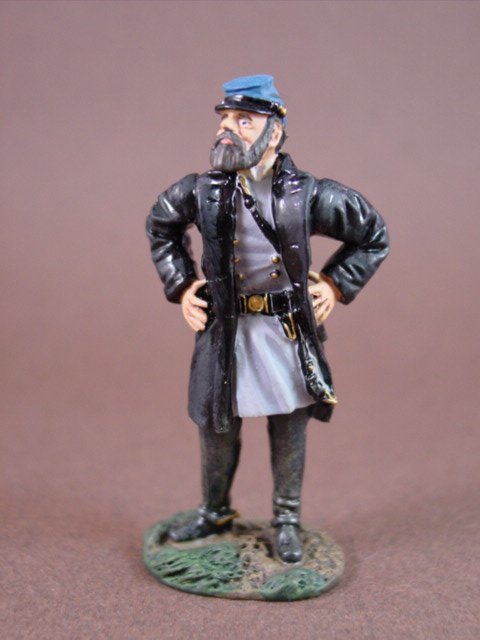 . I was very tired, very hungry, and much discouraged by what had taken place since morning. I had been obliged to fight my command under the most disadvantageous circumstances,
. I was very tired, very hungry, and much discouraged by what had taken place since morning. I had been obliged to fight my command under the most disadvantageous circumstances,  disconnected, without supports, without even opportunity to form in line of battle, and at one time contending against four divisions of the enemy. In this battle of Chickamauga, out of an effective strength Of 4,000 bayonets, I had lost 1,517 officers and men, including two brigade
disconnected, without supports, without even opportunity to form in line of battle, and at one time contending against four divisions of the enemy. In this battle of Chickamauga, out of an effective strength Of 4,000 bayonets, I had lost 1,517 officers and men, including two brigade 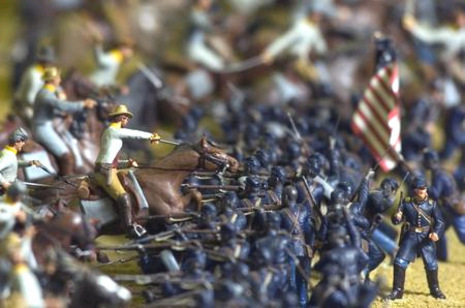 commanders. This was not satisfactory indeed, it was most depressing—and then there was much confusion prevailing around Rossville; and, this condition of things doubtless increasing my gloomy reflections, it did not seem to me that the outlook for the next day was at all auspicious, unless the enemy was slow to improve his present advantage. Exhaustion soon quieted all forebodings, though, and I fell into a sound sleep, from which I was not aroused till daylightthe junction of the Memphis and Charleston road with the Nashville and
commanders. This was not satisfactory indeed, it was most depressing—and then there was much confusion prevailing around Rossville; and, this condition of things doubtless increasing my gloomy reflections, it did not seem to me that the outlook for the next day was at all auspicious, unless the enemy was slow to improve his present advantage. Exhaustion soon quieted all forebodings, though, and I fell into a sound sleep, from which I was not aroused till daylightthe junction of the Memphis and Charleston road with the Nashville and  Chattanooga, with instructions to occupy Bridgeport also.Bridgeport was to be ultimately a sub-depot for storing subsistence. Below and above the 8th Kansas infantry.The, men wore four button sack coats and carried either 1861 Springfields or 1858 Enfield rifles. It varied by company. There appears to have been a mixture of forage caps and slouch hats worn by the men. The uniforms had been worn since June and showed the effect of a summer of campaigning and the fighting at Chickamauga. Members of the regiment remarked that the rebel pickets they face at Chattanooga were better dressed than 8th was. Officers were dressed very casually. If they wore an rank markings at all it was very scaled down. Many carried common cavalry sabers rather than officer's swords. One officer wounded and captured at Chickamauga had to do some talking to convince his captors that he was an officer at all. These houses are in West Virginia but could give someone an idea for wargames buildings of the Civil war
Chattanooga, with instructions to occupy Bridgeport also.Bridgeport was to be ultimately a sub-depot for storing subsistence. Below and above the 8th Kansas infantry.The, men wore four button sack coats and carried either 1861 Springfields or 1858 Enfield rifles. It varied by company. There appears to have been a mixture of forage caps and slouch hats worn by the men. The uniforms had been worn since June and showed the effect of a summer of campaigning and the fighting at Chickamauga. Members of the regiment remarked that the rebel pickets they face at Chattanooga were better dressed than 8th was. Officers were dressed very casually. If they wore an rank markings at all it was very scaled down. Many carried common cavalry sabers rather than officer's swords. One officer wounded and captured at Chickamauga had to do some talking to convince his captors that he was an officer at all. These houses are in West Virginia but could give someone an idea for wargames buildings of the Civil war "During its term of service, the 8th traveled 10, 750 miles. It participated in 15 battles and 18 skirmishes...It lost a total of 64 killed, 272 wounded and 21 missing." In the above losses there are not included 5 men killed and 17 men wounded in slight skirmishes or by guerrillas while foraging the ruins of the B & O Railroad roundhouse, which was burned by General Stonewall Jackson during the Civil War. Sure enough, they're still there… In addition to destroying 42 locomotives and 300 railroad cars, the Confederates dismantled several locomotives and dragged them by 40-horse-teams back to Virginia—where they were reassembled and found to be too wide for the narrower southern railroad tracks.
"During its term of service, the 8th traveled 10, 750 miles. It participated in 15 battles and 18 skirmishes...It lost a total of 64 killed, 272 wounded and 21 missing." In the above losses there are not included 5 men killed and 17 men wounded in slight skirmishes or by guerrillas while foraging the ruins of the B & O Railroad roundhouse, which was burned by General Stonewall Jackson during the Civil War. Sure enough, they're still there… In addition to destroying 42 locomotives and 300 railroad cars, the Confederates dismantled several locomotives and dragged them by 40-horse-teams back to Virginia—where they were reassembled and found to be too wide for the narrower southern railroad tracks. and scouting. Hence, the aggregate loss of the regiment was 379 killed, wounded and missing. Three officers and 92 men died of disease, bringing the total loss by death to 212.* The heaviest loss sustained by the regiment was at Chickamauga, where out of a total of 406 engaged, it lost 243 officers and men killed, wounded or missing, or 55 percent, of those present. Below 1852 Masonic Lodge.
and scouting. Hence, the aggregate loss of the regiment was 379 killed, wounded and missing. Three officers and 92 men died of disease, bringing the total loss by death to 212.* The heaviest loss sustained by the regiment was at Chickamauga, where out of a total of 406 engaged, it lost 243 officers and men killed, wounded or missing, or 55 percent, of those present. Below 1852 Masonic Lodge. He further says the day after the 8th Kansas arrived at Chattanooga their colonel marched them to the river and issued soap and told them to clean up.Another Typical house that has survived the war and time
He further says the day after the 8th Kansas arrived at Chattanooga their colonel marched them to the river and issued soap and told them to clean up.Another Typical house that has survived the war and time Some had not had a "bath" since June. A few days later a corporal took the camp kettle to a pond between the lines and stripped off every thing but his hat and boots and boiled all his clothing to kill the lice. George Washington worshipped here.
Some had not had a "bath" since June. A few days later a corporal took the camp kettle to a pond between the lines and stripped off every thing but his hat and boots and boiled all his clothing to kill the lice. George Washington worshipped here. The pickets of the 8th often made arrangements with the Confederate pickets facing them and agreed not to fire on one another unless ordered to do so.School house still standing
The pickets of the 8th often made arrangements with the Confederate pickets facing them and agreed not to fire on one another unless ordered to do so.School house still standing They met on the opposite banks of a creek between the lines to trade newspapers, liquor, or just talk.
They met on the opposite banks of a creek between the lines to trade newspapers, liquor, or just talk. supplies, and one of the points at which our army would cross the Tennessee, so I occupied it on July 29 with
supplies, and one of the points at which our army would cross the Tennessee, so I occupied it on July 29 with two brigades, retaining one at Stevenson, however, to protect that railway junction from raids by way of right next to roundhouse ruins is the replacement roundhouse that was built shortly thereafter and is still usable today. A strike here by railroad workers in 1877 brought out Federal troops, and an ensuing gun battle between the troops and the strikers resulted in a number of deaths.
two brigades, retaining one at Stevenson, however, to protect that railway junction from raids by way of right next to roundhouse ruins is the replacement roundhouse that was built shortly thereafter and is still usable today. A strike here by railroad workers in 1877 brought out Federal troops, and an ensuing gun battle between the troops and the strikers resulted in a number of deaths. The Martinsburg strike helped precipitate the first national labor strike in the country's history, with further
The Martinsburg strike helped precipitate the first national labor strike in the country's history, with further  loss of life and substantial economic disruption. Eventually, the railroad workers were "shot back to work," as one of them put it.
loss of life and substantial economic disruption. Eventually, the railroad workers were "shot back to work," as one of them put it.
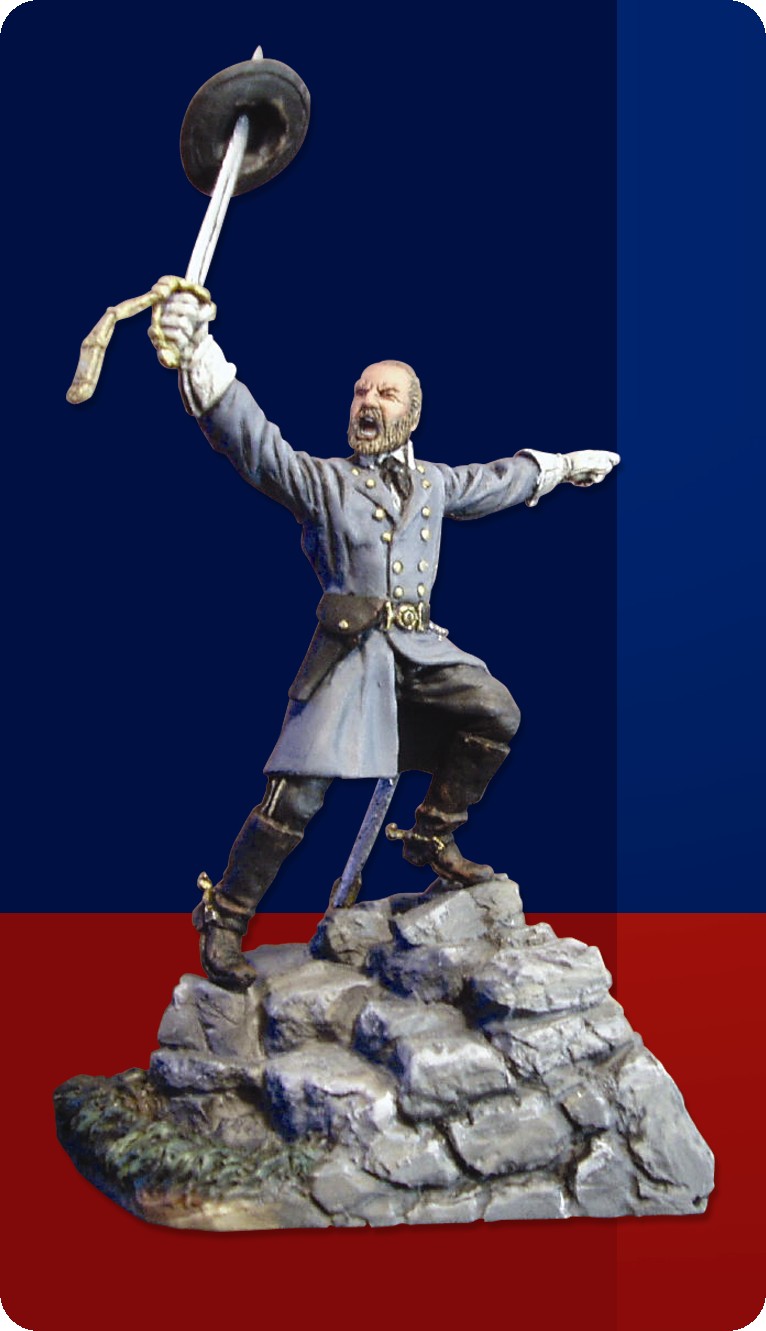 Caperton's ferry.
Caperton's ferry.  By the 29th of August a considerable quantity of supplies had been accumulated, and then began a general movement of our troops for crossing the river.Below a typical house of the Civil War period.
By the 29th of August a considerable quantity of supplies had been accumulated, and then began a general movement of our troops for crossing the river.Below a typical house of the Civil War period. As there were not with the army enough pontoons to complete the two bridges required, I was expected to build one of them of
As there were not with the army enough pontoons to complete the two bridges required, I was expected to build one of them of 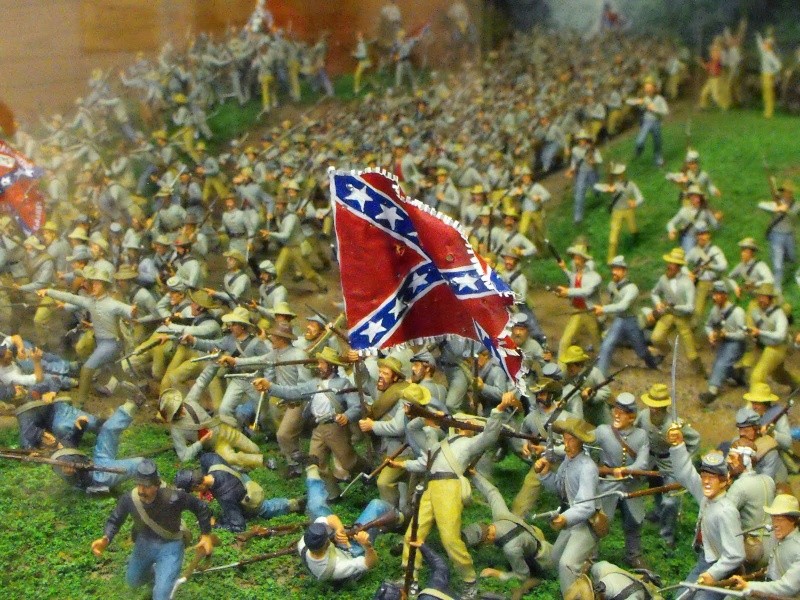 trestles; and a battalion of the First Michigan Engineers under Colonel Innis was sent me to help construct the bridge. Early on the 31st I sent into the neighboring woods about fifteen hundred men with axes and teams,
trestles; and a battalion of the First Michigan Engineers under Colonel Innis was sent me to help construct the bridge. Early on the 31st I sent into the neighboring woods about fifteen hundred men with axes and teams,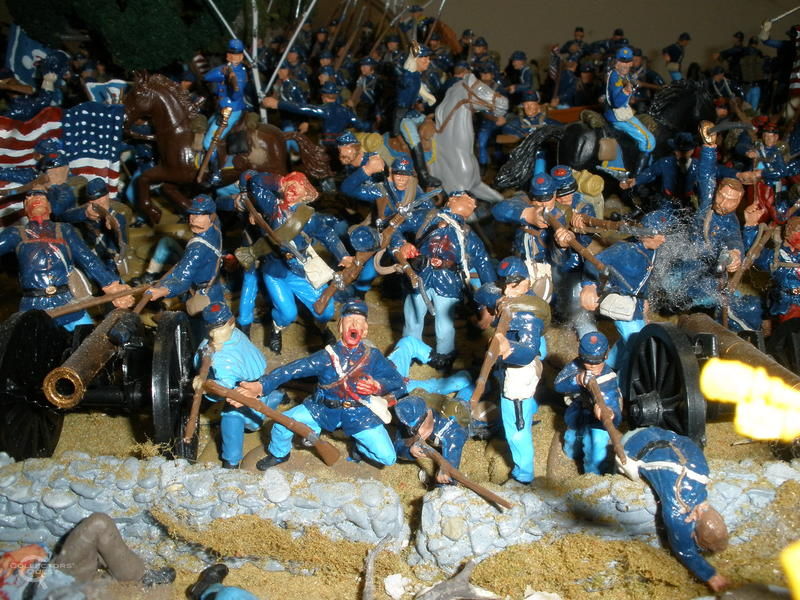 and by nightfall they had delivered on the riverbank fifteen hundred logs suitable for a trestle bridge. Flooring
and by nightfall they had delivered on the riverbank fifteen hundred logs suitable for a trestle bridge. Flooring  had been shipped to me in advance by rail, but the quantity was insufficient, and the lack had to be supplied by utilizing planking and weather-boarding taken from barns and houses in the surrounding country.
had been shipped to me in advance by rail, but the quantity was insufficient, and the lack had to be supplied by utilizing planking and weather-boarding taken from barns and houses in the surrounding country.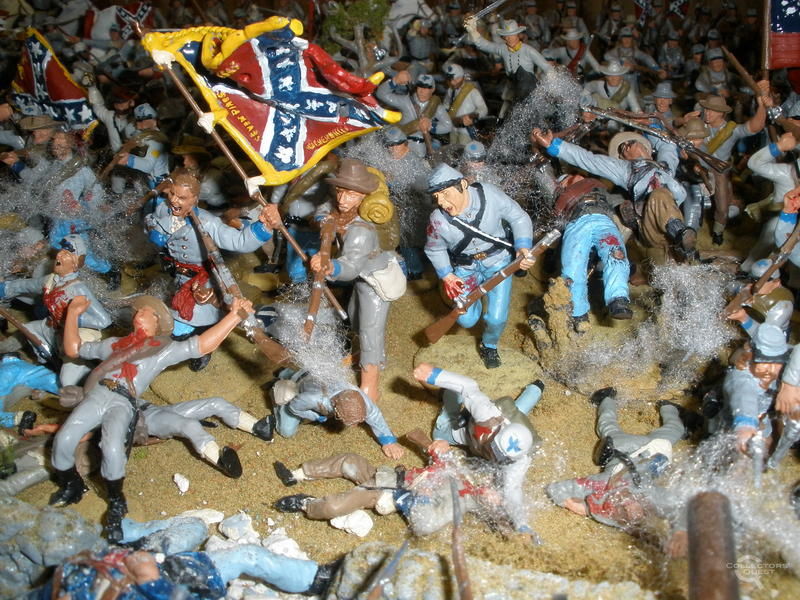 The next day Innis's engineers, with the assistance of the detail that had felled the timber, cut and half-notched the logs, and put the bridge across; spanning the main channel, which was swimming deep, with four or five pontoons that had been sent me for this purpose.
The next day Innis's engineers, with the assistance of the detail that had felled the timber, cut and half-notched the logs, and put the bridge across; spanning the main channel, which was swimming deep, with four or five pontoons that had been sent me for this purpose.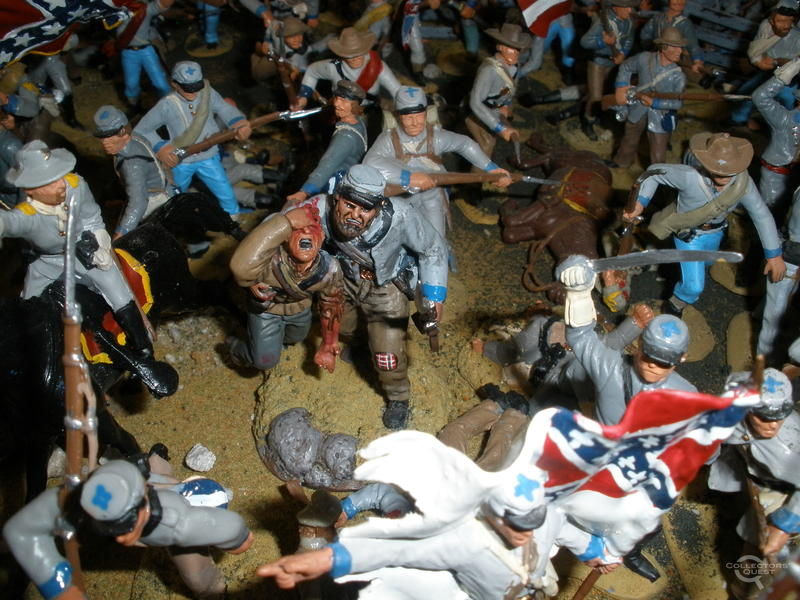 On the 2d and 3d of September my division crossed on the bridge in safety, though we were delayed somewhat because of its giving way once where the pontoons joined the trestles. We were followed by a few detachments from other commands, and by nearly all the transportation of McCook's corps.
On the 2d and 3d of September my division crossed on the bridge in safety, though we were delayed somewhat because of its giving way once where the pontoons joined the trestles. We were followed by a few detachments from other commands, and by nearly all the transportation of McCook's corps.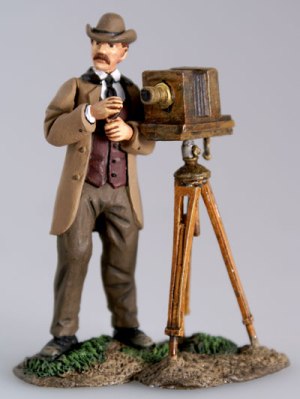
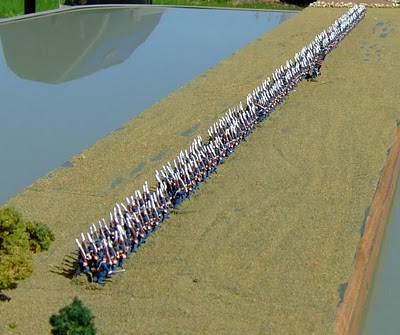
The enemy had meanwhile concentrated most of his forces at Chattanooga for the twofold purpose of holding this gateway of the Cumberland Mountains, and to assume a defensive
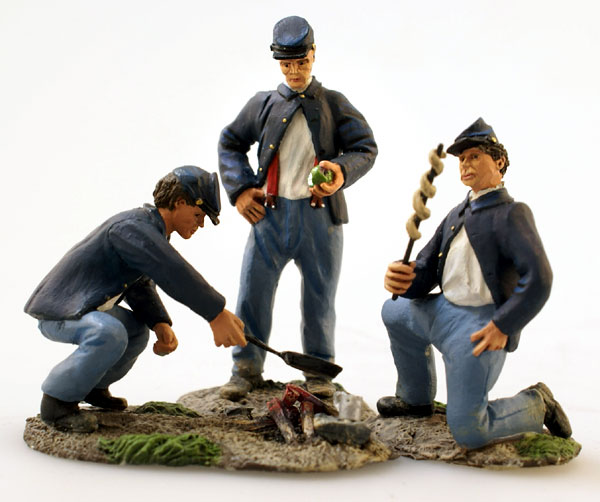 attitude which would enable him to take advantage of such circumstances as might arise in the development of the offensive campaign he knew
attitude which would enable him to take advantage of such circumstances as might arise in the development of the offensive campaign he knew 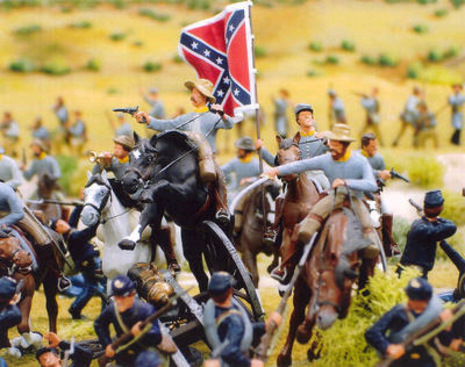
we must make. The peculiar topography of the country was much to his advantage, and while we had a broad river and numerous spurs and ridges of the Cumberland Mountains to cross at a long distance from our base, he was backed up on his depots of supply, and connected by interior lines of railway with the different armies of the Confederacy, so that he could be speedily reinforced.After getting to the south side of the Tennessee River I was ordered to Valley Head, where McCook's corps was to concentrate.
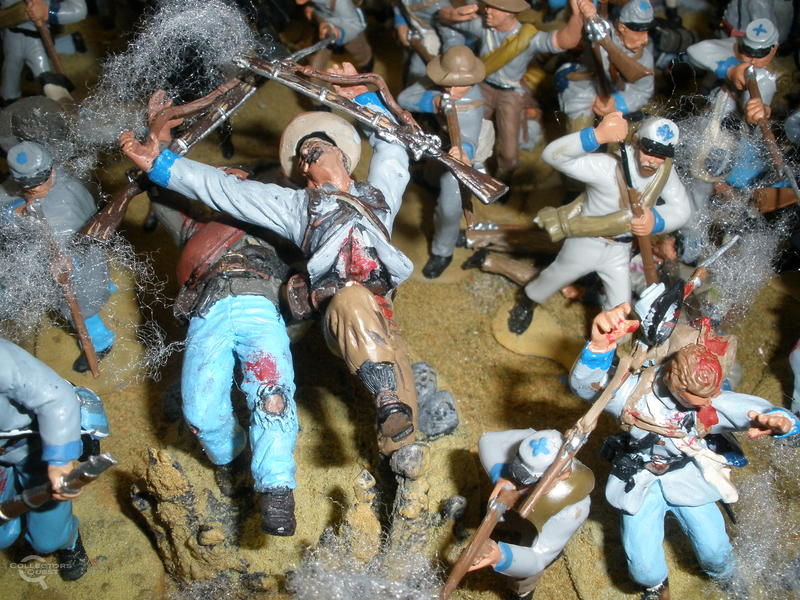 On the 4th of September I ascended Sand Mountain, but had got only half way across the plateau, on top, when night came, the march having been a most toilsome one. The next day we descended to the base, and encamped near Trenton. On the 10th I arrived at Valley Head, and climbing Lookout Mountain, encamped on the plateau at Indian Falls. The following day I went down into Broomtown Valley to Alpine. The march of McCook's corps from Valley Head to Alpine was in pursuance of orders directing it to advance on Summerville, the possession of which place would further threaten the enemy's communications, it being assumed that Bragg was in full retreat south, as he had abandoned Chattanooga on the 8th.
On the 4th of September I ascended Sand Mountain, but had got only half way across the plateau, on top, when night came, the march having been a most toilsome one. The next day we descended to the base, and encamped near Trenton. On the 10th I arrived at Valley Head, and climbing Lookout Mountain, encamped on the plateau at Indian Falls. The following day I went down into Broomtown Valley to Alpine. The march of McCook's corps from Valley Head to Alpine was in pursuance of orders directing it to advance on Summerville, the possession of which place would further threaten the enemy's communications, it being assumed that Bragg was in full retreat south, as he had abandoned Chattanooga on the 8th.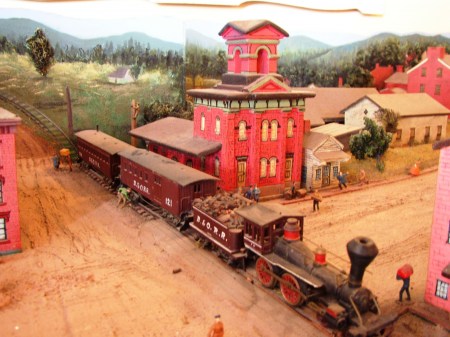 This assumption soon proved erroneous, however, and as we, while in Broomtown Valley, could not communicate directly with Thomas's corps, the scattered condition
This assumption soon proved erroneous, however, and as we, while in Broomtown Valley, could not communicate directly with Thomas's corps, the scattered condition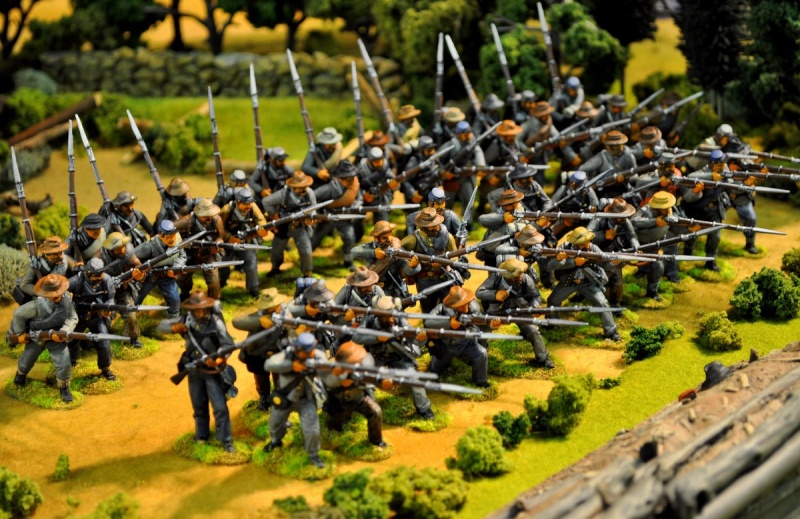 of the army began to alarm us all, and McCook abandoned the advance to Summerville, ordering back to the summit of Lookout Mountain such of the corps trains as had got down into Broomtown Valley.Below is a near Identical bridge of the Burnside oneThe Van Meter Ford bridge over Opequon Creek was a near-identical cousin of Burnside's Bridge at the Antietam battlefield. But you can still drive across this one, for the moment. A modern bridge will allow the old one to be retired.
of the army began to alarm us all, and McCook abandoned the advance to Summerville, ordering back to the summit of Lookout Mountain such of the corps trains as had got down into Broomtown Valley.Below is a near Identical bridge of the Burnside oneThe Van Meter Ford bridge over Opequon Creek was a near-identical cousin of Burnside's Bridge at the Antietam battlefield. But you can still drive across this one, for the moment. A modern bridge will allow the old one to be retired.
No comments:
Post a Comment